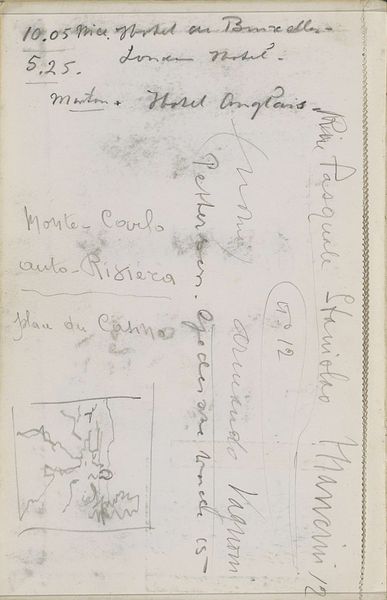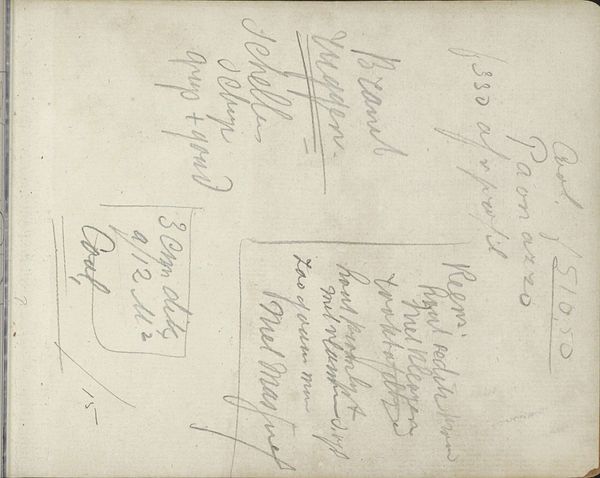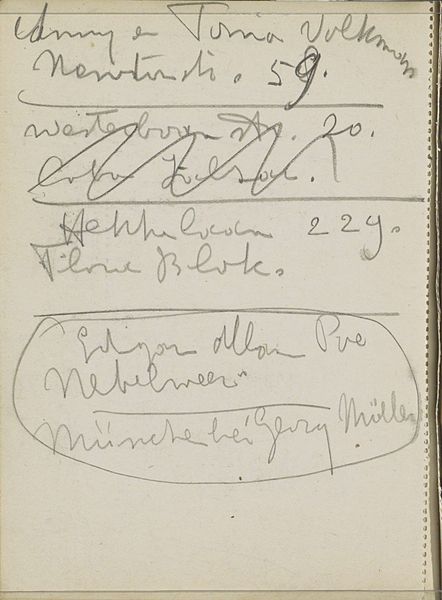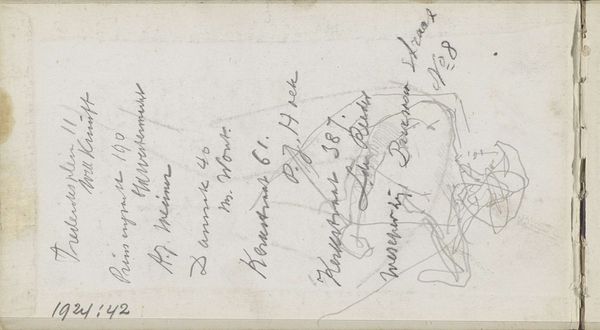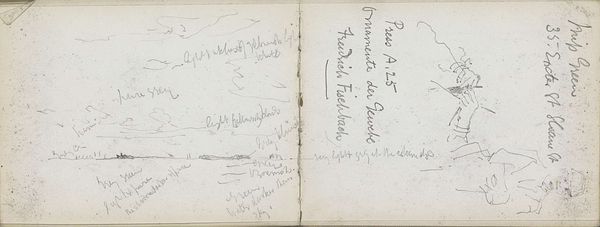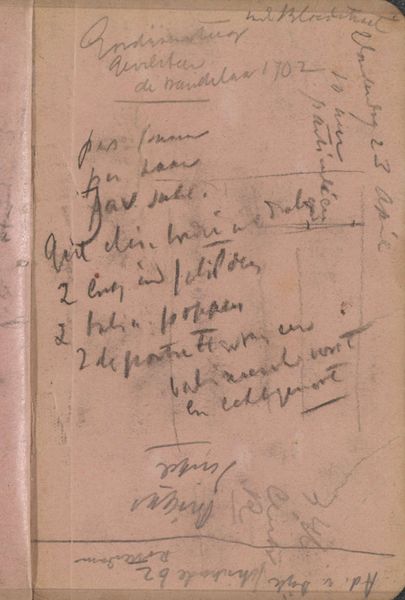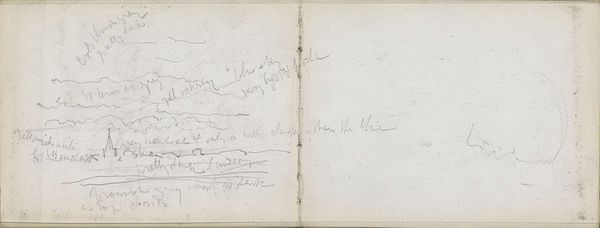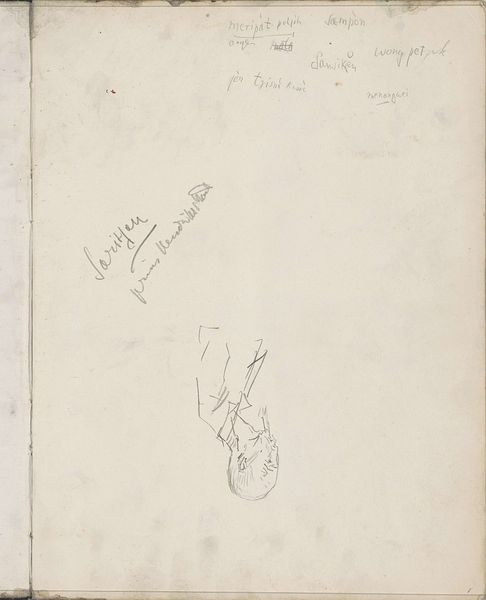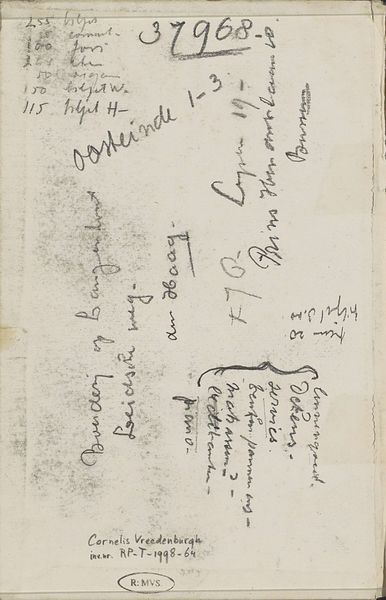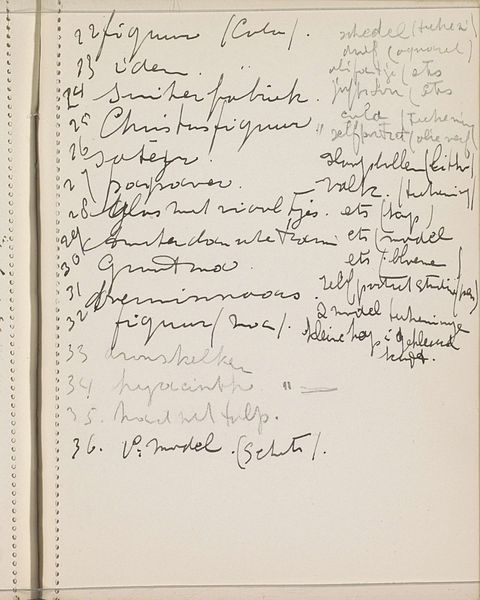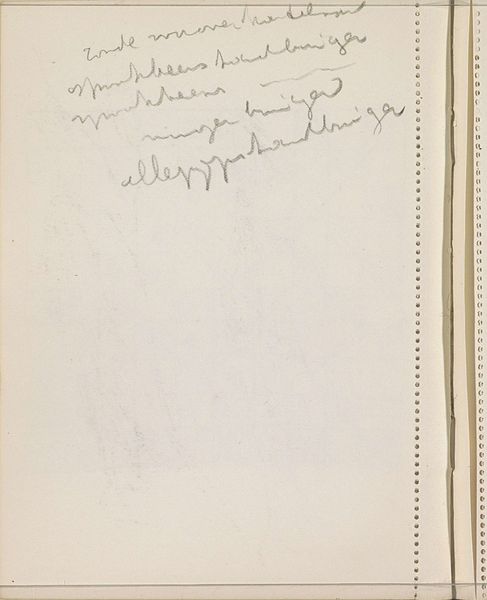
drawing, paper, ink, pencil, graphite
#
drawing
#
paper
#
ink
#
pencil
#
abstraction
#
graphite
Copyright: Rijks Museum: Open Domain
Curator: Cornelis Vreedenburgh’s work, simply titled "Notities", created sometime between 1890 and 1946. It's a drawing rendered in ink, graphite, and pencil on paper. It now resides here at the Rijksmuseum. What’s your initial impression? Editor: My first thought is… illegible! But there's something quite charming in the visual rhythm of it, almost like a musical score. There is something visually striking in the arrangement, this intentional layering of information. Curator: Right! On the surface, we see lists of items, repeated names—possibly someone named “Cohen” or "Colin"—interspersed with what looks like calculations and a street address, creating a personal historical archive on a single page. Editor: Yes, I am wondering how this reflects ideas of identity and personal history through symbolic repetition and arrangement. Do the repeated names function like a personal mantra or signature, acting as symbols of self? Curator: It definitely pushes the boundaries of drawing! We should also address how class might play into its conception: whose notes were these, and why was it considered important to archive them? Were these notations from everyday financial transactions? The fact that its materials are everyday ink, graphite, and pencil also speak to how the lower or middle classes often repurpose readily-available items to achieve aesthetic value. Editor: I agree; even the handwriting contributes to this sense of immediacy and individuality. The numerical calculations make me think of symbolic ordering and perhaps numerological meaning—numbers can certainly hold spiritual and cultural significance! Curator: And look at the deliberate way certain elements are crossed out or underlined! We must remember that, since art production at this time was predominantly male, "Notities" is speaking directly to broader dialogues around authorship and canonicity. Editor: I'm particularly drawn to those flourishes within the repeated names. It suggests a kind of ritualistic marking, making me wonder about personal beliefs or superstitions embedded within those written acts. Curator: So, it functions almost as a coded message reflecting complex layers of society. Fascinating to consider, isn't it? Editor: Absolutely. It truly highlights the ability of humble materials and scribbles to represent layered realities!
Comments
No comments
Be the first to comment and join the conversation on the ultimate creative platform.
